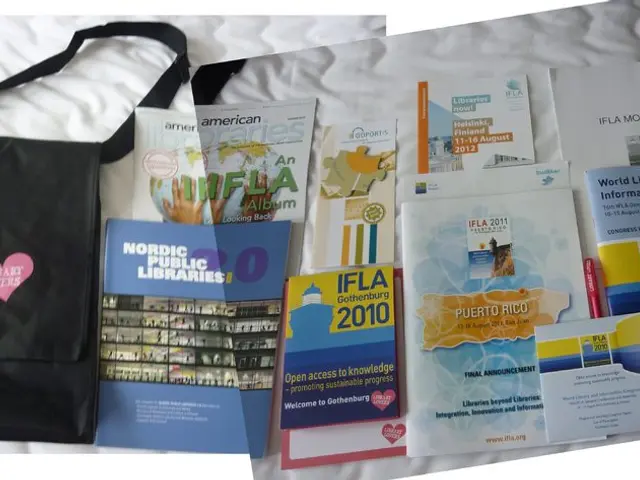The Importance of Sustainability in Plastic Management
In the world of design, sustainability is no longer a trend, but a necessity. Many consumers are drawn to sustainable items not just out of environmental concern, but also because of the novelty and allure that designers bring to the sustainability story. This shift is evident in the latest developments in the use of sustainable materials in various industries.
At the K Show, Chris Lefteri, an expert in design, is leading a tour showcasing innovative and forward-thinking solutions in sustainable plastics, materials, and finishes. One such example is Dacia's partnership with LyondellBasell, which introduces speckled plastic components across its vehicle interiors, using post-consumer recycled content.
The speckled aesthetic is a growing trend in sustainable materials, celebrating the recycled or biobased origin of the material and creating unique, unrepeatable aesthetics. This can be seen in the Volvo EX30, which features speckled door panels and upholstery from recycled materials, making distinctive textures a defining element of its interior design.
However, sustainable materials are not just about novelty. Companies like Panasonic have developed Nagori, a plastic material made from minerals leftover from the water purification process, offering a unique, refined look. Unidirectional polypropylene (PP) fibers bring a new visual language to nonmaterial plastics, with a linear texture that could be embraced as a modern marker of luxury.
Mainstream materials like plastics are still desirable, but a mind shift is needed to move away from the steady supply of virgin materials and embrace sustainable alternatives. This is where companies like Othilapak and Jarsking come in, contributing to developing innovative, sustainable plastics and surface materials approaching traditional luxury aesthetics and suitable for mass production.
Kohlschein produces sustainable, FSC® or PEFC-certified paper-based packaging alternatives, serving as a substitute for traditional plastic materials in mass-market applications. In high-tech sectors, manufacturers are researching bio-based and recycled plastics, as well as biodegradable circuit board materials, to replace conventional plastics sustainably.
The goal of the tour is to give designers fresh inspiration, real examples, and the tools to start shaping a future where design excellence and sustainability go hand in hand. It's about redefining luxury, finding sustainable processes to denote a new kind of luxury, rather than just replicating current notions.
Embracing imperfections in injection-molded plastics can redefine their aesthetic. This can be seen in the Steelcase Perch stool, produced from hard-to-recycle e-waste plastics, with a finish full of color inconsistencies and ghosting lines. Some pioneering brands are starting to rewrite the aesthetic of plastic, making each product visibly unique.
The Microsoft Xbox Remix Special Edition Controller is a prime example, made from post-consumer recycled plastics, showcasing visible traces of the recycled content. There's growing enthusiasm for products that visibly signal a move away from polluting, resource-intensive production, but resistance often comes from decision makers and quality control teams.
As we move towards a more sustainable future, it's clear that a collaborative learning curve is needed among industrial designers, CMF specialists, material scientists, and plastic and finish manufacturers to forge a new aesthetic language for sustainability. The article was published in CHEManager International 3/2025, marking a significant step in the journey towards a sustainable future.
Read also:
- Cybertruck's Disappointing Setback, Musk's New Policy, Mega-Pack Triumphs, Model Y's Anticipated Upgrade Prior to Refresh (Week of January 25 for Tesla)
- Haval H6 Hybrid Analysis: Delving into Engine Performance and Fuel Efficiency
- Tesla broadens its Indian footprint with a new showroom and Supercharger establishment
- Vans returning, allegedly?






